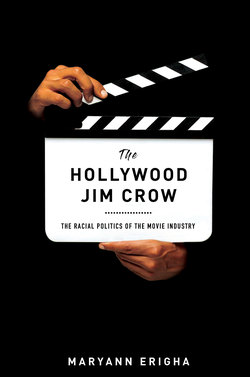The Hollywood Jim Crow

Реклама. ООО «ЛитРес», ИНН: 7719571260.
Оглавление
Maryann Erigha. The Hollywood Jim Crow
Отрывок из книги
THE HOLLYWOOD JIM CROW
The Racial Politics of the Movie Industry
.....
This story of unequal racial outcomes in Hollywood is told through statistical records, communications between Hollywood insiders, and perceptions of working directors. The book (1) draws on comprehensive industry data on the directors, distributors, genres, production budgets, and box-office receipts of more than a thousand contemporary movies, (2) examines trends in directors’ employment on different movies, (3) demonstrates how opportunities, resources, and outcomes in Hollywood are structured by race, and (4) shows how racial inequality is made in the production, distribution, financing, and marketing of movies and in the hiring of labor. Systematic attention to the organizing logics of the film industry reveals a racial division of labor; this book is the first to provide a detailed and systematic analysis of racial divisions of labor in work among Hollywood directors. Furthermore, the twenty-first-century period permits a timely discussion of the state of racial disparities in Hollywood during a post-civil-rights era that has been marked by growing postracial and colorblind discourses. Hollywood’s racial politics illustrate how race continues to matter despite public discourses that suggest otherwise.
Specifically, the book compares the career paths of Black directors to other racialized groups in twenty-first-century Hollywood. Out of all U.S. racial minority groups, African Americans have the most representation as Hollywood directors. Therefore, the book focuses on one marginalized racial group in Hollywood, Black directors, in relation to racialized others. Investigating the level of African Americans’ inclusion in the film industry particularly necessitates an examination of their access to the facets of production from which they were formerly excluded—the movies and the positions at studios that are most central to film-industry operations. Accessing high-status positions provides financial remuneration that is important to understanding and alleviating racial income gaps—of course, notwithstanding the obvious and pervasive racial exclusion involved in who is permitted to manage large financial investments, own banks, and print and distribute currency.18 The state of Black inclusion in the contemporary film industry is best evaluated by assessing involvement in areas that are financially lucrative, are central to industry operations, and wield the greatest ideological power.
.....